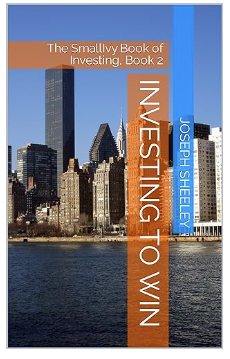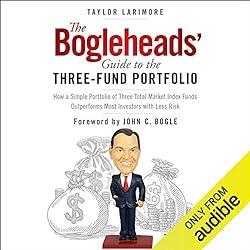
Photo by Nubia Navarro (nubikini) on Pexels.com
" data-orig-size="867,1300" sizes="(max-width: 867px) 100vw, 867px" data-image-title="blue volkswagen beetle coupe in selective focus photography" data-orig-file="https://smallivy.files.wordpress.com/2023/12/pexels-photo-1522186.jpeg" data-image-description="" data-image-meta="{"aperture":"0","credit":"","camera":"","caption":"","created_timestamp":"0","copyright":"","focal_length":"0","iso":"0","shutter_speed":"0","title":"","orientation":"0"}" width="867" data-medium-file="https://smallivy.files.wordpress.com/2023/12/pexels-photo-1522186.jpeg?w=200" data-permalink="https://smallivy.com/2023/12/27/the-time-for-small-stocks-is-coming/pexels-photo-1522186/" alt="" height="1300" srcset="https://smallivy.files.wordpress.com/2023/12/pexels-photo-1522186.jpeg 867w, https://smallivy.files.wordpress.com/2023/12/pexels-photo-1522186.jpeg?w=100&h;=150 100w, https://smallivy.files.wordpress.com/2023/12/pexels-photo-1522186.jpeg?w=200&h;=300 200w, https://smallivy.files.wordpress.com/2023/12/pexels-photo-1522186.jpeg?w=768&h;=1152 768w" class="wp-image-23874" data-large-file="https://smallivy.files.wordpress.com/2023/12/pexels-photo-1522186.jpeg?w=683" />Photo by Nubia Navarro (nubikini) on Pexels.comThe 2010s and early 2020s were the time for the rise of the mega caps. Google, Amazon, Netflix, Ebay, FaceBook, and of course the tech behemoth, Apple, grew into giant corporations selling all sorts of different products. Amazon, for example, successfully got everyone to buy many of the items they bought in person before through them instead by offering “free shipping” for a small membership fee each month. As a result, the retail giant has ballooned while the small retailer with brick and mortar stores has lagged.
The index fund/ETF craze, with influencers on X promoting the large cap ETFs like the Vanguard S&P 500 index fund, VOO, with these indices highly concentrated in the tech mega caps, has also driven investing into these same names. As a result, large caps have dominated the markets for the last ten years. But the time for small and mid caps is coming, as well as for non-US stocks. In particular, right now, when we’re coming out of a bear market and into a new bull, small stocks tend to have their best performances. Given that small caps will outperform large caps over long periods of time, it is inevitable that small caps will have some great years in the future. Here’s why and when you should be invested in small caps, as well as what to expect from them.
Want to learn the secrets to investing and really turbocharge your returns? Check out the second book in The Small Investor series, Investing to Win. This book presents 40 years of investing experience. Someone starting with zero knowledge of investing and the stock market could take this book and learn all that they needed to invest and do well. It would also be useful to someone who has invested and traded stocks for a while but who is really not getting the kind of returns desired.

Investing to Win
(Note, this site contains affiliate links. As an Amazon Associate I earn from qualifying purchases. When you click on an affiliate link and buy something, The Small Investor will get a small commission for the referral. You are charged nothing extra for the purchase. This helps keep The Small Investor going and free. I don’t recommend any products I do not fully support. If you would like to help but don’t see anything you need, feel free to visit Amazon through this link and buy whatever you wish. The Small Investor will get a small commission when you do, again at no cost to you.)
Why small caps outperform large
Small caps will outperform large caps over long periods of time. This makes sense given the reason that stock prices increase: As earnings grow, stock prices increase as well since the amount of money the investors stands to get from his investment now or in the future from dividends increases. If a company is paying $1.00 per share per year in dividends and you pay $100 per share, you’ll be getting a 1% return.
If the company increases earnings and now pays out a $2.00 per share per year dividend, you’ll now be receiving a 2% return. Assuming interest rates remain the same, the stock price is likely to increase over time to $200 per year so that, again, the company is paying a 1% dividend. Based on what other investments are paying at the time, getting 1% from the company is fair and reasonable, so investors will bid the price up until that equilibrium level is reached. Of course, this is just the average price for the stocks. There will be all sorts of random fluctuations on top of this “fair price,” but we can just ignore these if we’re investing for the long term since these fluctuations will even out.
(If you’d like to learn more about how to decide how much you should put in different types of assets, Sample Mutual Fund Portfolios gives lots of information and examples of how to make allocations for all sorts of different goals, including retirement.)

Small companies are able to increase their earnings faster (on a percentage basis) than large companies because it is far easier for a small company to double sales than a large company. A small store can increase from $5M in sales to $10M much more easily than can a large company double from $2B in sales to $4B. This means that it is easier for a small company to double the value of their stock than it is for a large company. In addition, it is easy to find enough investors with the cash needed to double the capitalization of a company from $200M to $400M than it is to find those needed to increase one from $50B to $100B.
Small caps are also much more likely to die off, however. If the CEO of a small company makes a misstep of if the economy just causes business to fall for a few month, small companies can quickly find themselves unable to pay for employees, rents, and the loans they have outstanding. Large companies have many business lines in many countries, plus often have cash-on-hand and access to ready credit. If things get really bad, big companies can now call their cronies in Washington and get a bailout. Small companies often won’t see a bailout until years after they have already closed their doors, if ever.
Because they are more risky, small stocks tend to be priced lower relative to expected future earnings than large stocks. This means that when they do make earnings, their share price rises a lot more than it will for large caps. If you buy just a few small caps, you might do really well but you also have a much greater chance of seeing a total loss on one or more positions than you will with an equal number of large caps. But if you buy a whole big basket of small caps, like you do when you buy a small cap fund like the Vanguard Small Cap Index ETF, VB, you will get higher returns over long periods of time than you will with a big basket of large caps.
For a whole lot more information on investing, check out The SmallIvy Books of Investing series:
This is my first book, which covers all of the details of how to invest and the risks involved in investing in different types of securities. This is the information you need to know before buying individual stocks or even mutual funds. Even more than that, it tells you what you should be doing at each stage of life to come out financially independent before you retire. Click on the book image above to learn more about it and read an exert on Amazon.

The behavior of small caps
Large caps tend to hold their value. You’ll still see swings of 10-20%, but you won’t see a large cap drop by 75% unless there are very serious issues at the company or there is a traumatic economic event like the government shutdowns in 2020 or the 9/11 terrorist attacks. They also tend to grow relatively steadily, moving up to some plateau and then sitting there for a few months, then moving up in price to the next level, again oscillating there. Moves upwards tend to be coordinated with the rest of the markets. Large caps especially do well late in a bull market.
Small caps tend to sit for a long period of time and then move up very aggressively, increasing by 100% or more. They often fall back down after initial moves up. Perhaps investors are happy to see their gains and want to take profits, so they tend to sell into the relatively sparse market for the stock. Successful small caps will go through these fits and starts before finally “making it,” growing earnings enough to become a mid-cap and finally a large cap.

Learn to be a better investor by reading J.D. Spooner’s Do You Want to Make Money or Would You Rather Fool Around? This book made me realize that I wasn’t buying enough shares in the companies I was investing in, meaning my wins were no where near as big as they should have been.
Small caps tend to do really well at the start of new bull markets, especially when these are touched off by falling interest rates. This is because lower rate loans provide the money small businesses need to expand and grow. While large cap indices might return 5-20% per year, small caps will do nothing for several years and then go up 40-60% all at once. They are also more likely to have a down year before or after one of these big run-ups.
So, small caps can be very frustrating for the investor. They’ll sit and do nothing for long periods of time, making him wonder why he owns them at all instead of just putting everything into large caps. But then, small caps will have a great year or two and double in value, making up for all of the lost years where they did nothing.

Want diversification without a lot of work? Check out The Bogleheads’ Guide to the Three Fund Portfolio. Learn to build a diversified portfolio of index funds with just three funds.

Small caps may be ready to rally
Small caps have been disappointing when compared to large caps for the last several years. One doesn’t want to follow the gambler’s fallacy and assume that because large has outperformed small this year that small will outperform large next year, but over long periods of time, small caps have outperformed large caps, so it can be expected that they will again in the future. It also just makes logical sense, given how much easier it is for small caps to grow earnings and given that the outperformance of large caps as of late means their stocks are becoming high in price relative to earnings and fair market prices where small caps have been becoming more of a bargain. Given the Fed’s signaling that it is ready to stop raising rates and perhaps drop them a few times this year, the interest rate environment also bodes well for small caps.
Will small caps have a great year in 2024? Predictions are difficult to make, especially about the future. But if held long enough, small caps should have their day and reward patient investors who have kept money in this area despite being drubbed every year. Cubs fans finally had their day after years of waiting. Small cap investors will as well.
The wealthiest people read a lot of non-fiction books. Don’t have time to read books because of your long commute? Listen to your books in stead with Audible. Free trial at the link below.
Good investors will hold both large and small caps. If you’re following the individual stock investing strategy in Investing to Win, most or all of your individual stock holdings will be small or mid caps since these are the companies that have the most room to grow. You’ll also hold large caps through an index fund or index fund ETF such as VOO.
If you only invest through mutual funds and ETFs, it is easy to hold small and large caps by investing in a small cap fund and a large cap fund. For example, you could invest in the two Vanguard ETFs, VV (large caps) and VB (small caps). You could also add in VO (mid caps) just to cover the whole market. Alternatively, you could invest in a whole market fund like VTI, but that will result in you being slanted mostly towards large caps since the index fund is market cap weighted, meaning investment allocations are made based on market capitalization. Investing in separate funds will allow you to make sure you have a larger portion of your account invested in small caps than VTI allows.
Investing 50% VV and 50% VB wouldn’t be a terrible basic plan. If you have a really long time to invest, like 30 years or more, you’ll probably do better slanting towards small, like 60% VB/VO and 40% VV. If you have less time, you’re less likely to see a jaw dropping plunge if you shift towards large caps, so a 70-30 large-small allocation might make sense if you’re ten years out from tapping into the money. Of course, adding income investments like bonds will also help reduce portfolio value fluctuations.
Once you’ve established positions, you need to rebalance, where you sell off the best performing fund and buy the worst performing fund each year to return your investment allocations to your targets. In doing so you will automatically move money from the areas of the market that are likely high in price since they have done well to those that are lower because they’ve lagged behind. For example, if small caps go down 25% next year where large caps go up 15%, at the end of the year you’ll sell some of your large cap fund and buy more of the small cap fund when you rebalance. If you had been investing 50-50 for the last several years, you would have been moving money from your gains in large caps into small caps regularly, so you’re in good shape now for any rally in small caps that may develop.
Have a burning investing question you’d like answered? Please send to [email protected] or leave in a comment.
Follow on Twitter to get news about new articles. @SmalllIvy
Disclaimer: This blog is not meant to give financial planning or tax advice. It gives general information on investment strategy, picking stocks, and generally managing money to build wealth. It is not a solicitation to buy or sell stocks or any security. Financial planning advice should be sought from a certified financial planner, which the author is not. Tax advice should be sought from a CPA. All investments involve risk and the reader as urged to consider risks carefully and seek the advice of experts if needed before investing.
